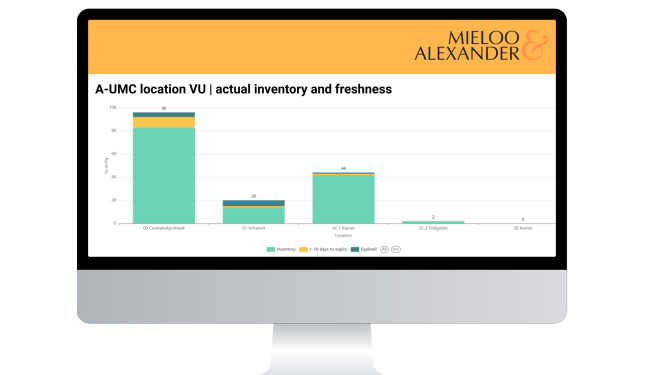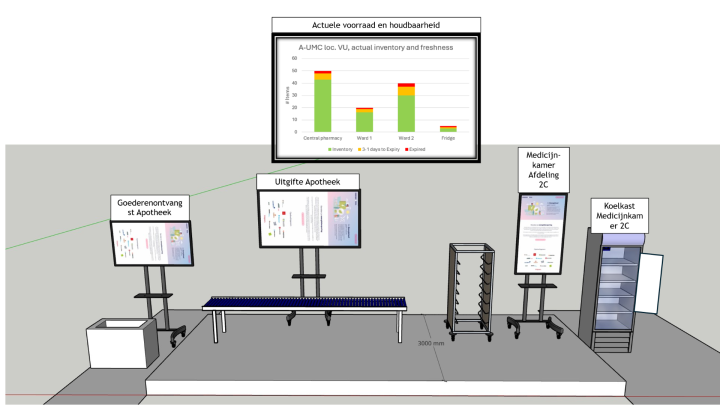What we’re demonstrating today
You’ll see a complete RFID medication flow across four processes:
-
1) Goods receiving: scan tub check vs. order
Medication crates are placed in the RFID scan tub and automatically verified against the purchase order. Discrepancies are flagged instantly. -
2) Central pharmacy issue: conveyor belt registration
A medication crate is placed on the roller conveyor and registered as issued from the central pharmacy, creating real-time visibility of outbound flow. -
3) Ward inventory & usage: handheld counting (HH)
Zebra handhelds register ward stock, replenishments and consumption. Spot checks or cycle counts sync directly with the central inventory. -
4) Point-of-care storage: intelligent RFID medication fridge
The fridge automatically tracks stock, logs dispensing per user and monitors expiry with proactive alerts.
Want a walkthrough tailored to your setup? Ask us for a short demo slot or pilot outline.




